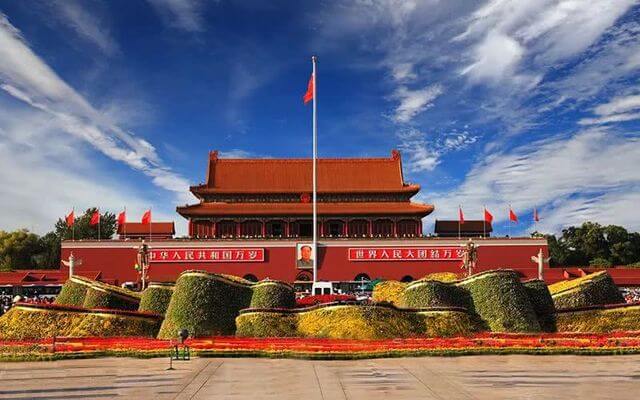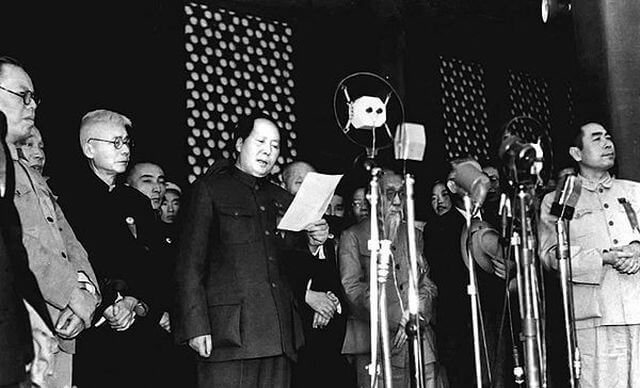The National Day of the People’s Republic of China is also known as “10.1”, “National Day”, “Chinese National Day”, “National Day Golden Week”. The Central People’s Government announced that since 1949, October 1 of each year, the day when the People’s Republic of China was declared established, is the National Day.

The National Day of the People’s Republic of China is a symbol of the country. It appeared with the founding of New China and became particularly important. It has become a symbol of an independent country, reflecting our country’s state system and government system. National Day is a new, universal holiday form, which carries the function of reflecting the cohesion of our country and nation. At the same time, the large-scale celebrations on National Day are also a concrete manifestation of the government’s mobilization and appeal. It has the four basic characteristics of National Day celebrations to show national strength, enhance national confidence, reflect cohesion, and exert appeal.
The origin of the holiday
On October 1, 1949, the inauguration ceremony of the Central People’s Government of the People’s Republic of China, the founding ceremony, was grandly held in Tiananmen Square in Beijing.

On December 2, 1949, the resolution passed at the fourth meeting of the Central People’s Government Committee stated: “The Central People’s Government Committee declared: Since 1950, it will be October 1st each year, the great day the People’s Republic of China proclaimed its founding. , Is the National Day of the People’s Republic of China.”
This is the origin of “October 1” as the “birthday” of the People’s Republic of China, that is, the “National Day”.
Since 1950, October 1st has been a grand celebration for the people of all ethnic groups in China.
Festival Evolution
In the early days of the founding of New China (1950–1959), large-scale celebrations and military parades were held every National Day.
In September 1960, the Central Committee of the Communist Party of China and the State Council decided to reform the National Day system based on the policy of building the country through diligence and thrift. Since then, from 1960 to 1970, grand rallies and mass demonstrations were held in front of Tiananmen Square on National Day every year, but no military parade was held.
From 1971 to 1983, on October 1st of each year, Beijing celebrated the National Day with large-scale garden party activities and other forms, without mass demonstrations. In 1984, the 35th anniversary of the National Day, a grand National Day military parade and mass celebration parade were held. In the following ten years, other forms of celebration of the National Day were adopted, and the National Day military parade and mass celebration parade were not held.
On October 1, 1999, the 50th anniversary of the National Day, a grand National Day military parade and mass celebration parade were held. This is the last grand National Day celebration held by the People’s Republic of China in the 20th century.
Holiday Significance
National symbol
The National Day of the People’s Republic of China is a symbol of the country. It appeared with the emergence of the country and became particularly important. It became a symbol of an independent country, reflecting the state and government of this country.
Functional manifestation
Once the special commemoration method of National Day becomes a new and universal holiday form, it will bear the function of reflecting the cohesion of this country and nation. At the same time, the large-scale celebrations on National Day are also a concrete manifestation of the government’s mobilization and appeal.
Basic features
Demonstrating national strength, enhancing national confidence, embodying cohesion, and exerting appeal are the three basic characteristics of National Day celebrations.
Holiday Events
Military Parade
After the founding of New China, according to the decision of the Chinese People’s Political Consultative Conference, the military parade was listed as an important part of the National Day ceremony. From the founding ceremony in 1949 to the 10th anniversary of the founding of the People’s Republic of China in 1959, the People’s Republic of China held a large-scale National Day military parade in Tiananmen Square every year, which was held 11 times before and after.
In September 1960, the Central Committee of the Communist Party of China and the State Council decided to reform the national ceremonial ceremony system based on the policy of strict economy and diligence and thrift to build the country, implementing “a small celebration in five years, a large celebration in ten years, and a military parade on Daqing.”
In 1964, the military parade clause appeared for the first time in the military formation order issued by the Ministry of National Defense. After that, due to the “Cultural Revolution” and other reasons, China did not hold a National Day military parade for 24 consecutive years.
In 1981, on Deng Xiaoping’s proposal, the Central Committee of the Communist Party of China and the Central Military Commission decided to resume the military parade. On the 35th anniversary of the National Day in 1984, the first large-scale National Day military parade was held.
Since the founding of the National Day of the People’s Republic of China, there have been 11 military parades during the National Day celebrations from 1949 to 1959, the 35th anniversary of the National Day in 1984, the 50th anniversary of the National Day in 1999, and the 60th anniversary of the National Day in 2009. On October 1, 2019, the celebration of the 70th anniversary of the founding of the People’s Republic of China was grandly held in Beijing. Xi Jinping, General Secretary of the Central Committee of the Communist Party of China, President of the State, and Chairman of the Central Military Commission, inspected the troops under review.
Landing up lights
Every National Day holiday in China, all enterprises and institutions will hang lanterns or banners to celebrate the National Day with slogans such as “Celebrate National Day”; on the square are bonsai and hydrogen balloons with slogans to welcome the National Day with a joyous atmosphere.
National Day holiday
Since 1999, the National Day has been the “Golden Week” holiday in Mainland China. The statutory holiday for National Day is 3 days, and the two weekends before and after are adjusted to a total of 7 days; for overseas institutions and enterprises in Mainland China, it is 3-7 days; Macau Special Administrative Region is 2 days, and Hong Kong Special Administrative Region is 1 day.
As of 2014, the General Office of the State Council of the People’s Republic of China has announced that it will be closed from October 1st to 7th for a total of 7 days. Work on September 28 (Sunday) and October 11 (Saturday).
Flag Raising Ceremony
Every National Day, the flag of the People’s Republic of China is raised at 6:10.
On October 1, 2013, according to the statistics of the Tiananmen District Management Committee, about 110,000 people from all over the country braved the rain to watch the flag-raising ceremony at Tiananmen Square in Beijing early that morning to celebrate the 64th anniversary of the founding of the People’s Republic of China.
[…] Entrepreneurs Ranking was announced. The list is based on entrepreneurs whose main business is in mainland China, and is sorted by their total cash donations and equity donations in 2021. In the end, Lei Jun […]
[…] capital. It is a higher education institution directly educated by the Ministry of Education of the People’s Republic of China to cultivate high-level specialized music talents. Construction of colleges and universities, the […]
[…] Disneyland is the first Disney theme park in mainland China. It has seven charming and unforgettable magical parks, Mickey Street, Fantasy Garden, Fantasy […]
[…] most popular ice and snow festival in China is undoubtedly the Harbin Ice and Snow Festival. The Ice and Snow Festival is China’s first local […]